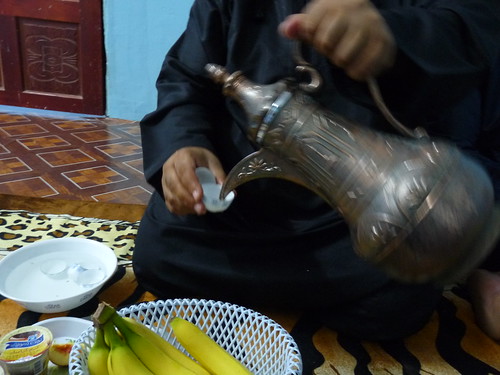The UNESCO committee for the safeguarding of intangible cultural heritage meeting in Namibia has inscribed 20 new elements on the Representative List of the Intangible Cultural Heritage of Humanity. The Representative List includes forms of expression that testify to the diversity of the intangible heritage and raise awareness of its importance. The review of nominations for inscription on this list is finished for this year, which saw 23 elements inscribed out of a total of 35 that were proposed.
The following elements from Asia Pacific and the Middle East were inscribed on December 2:
Azerbaijan - Copper craftsmanship of Lahij
Copper craftsmanship of Lahij is the traditional practice of making and using copperware in the Lahij community of the Caucasus. The copper-smelting master prepares the copper which the coppersmith-hammerer then moulds it into thin plates. A craftsperson engraves the plates with designs that represent their environment and reflect traditional knowledge and values. People from Azerbaijan buy the copperware for daily use. The practice is transmitted from father to son and said to be a clear marker of Lahij identity.
Cambodia, Philippines, South Korea and Vietnam – Tugging rituals and games
Tugging rituals and games in the rice-farming cultures of East Asia and Southeast Asia are enacted among communities to ensure abundant harvests and prosperity. They mark the start of the agricultural cycle. Teams on either end of a rope try to tug it from the other. The practice is non-competitive, strengthening community solidarity and identity. Elders lead young people and the rituals.
North Korea - Tradition of kimchi-making in the Democratic People’s Republic of Korea
Kimchi is a dish made with various vegetables, including wild greens, as well as spices, fruit, meat, fish or fermented seafood before undergoing lactic fermentation. It is served for daily meals and special occasions. Bearers and practitioners of the element are mainly women. However, when preparing large quantities for winter, family members, neighbours or other members of the community contribute, enhancing social cohesion.
Indonesia - Three genres of traditional dance in Bali
Traditional Balinese dances, performed by men and women, symbolise particular traditions, customs and religious values. The dances consist of various movements and facial expressions to music played on the gamelan. The performers, who wear brightly coloured costumes with floral and faunal motifs, need to be disciplined, humble, charismatic and inject spiritual energy into the performances. The dances are mainly transmitted informally to groups of children.
Kazakhstan, Kyrgyzstan - Aitysh/Aitys, art of improvisation
Aitysh/Aitys is a contest between two people on poetry improvisation spoken or sung to music of traditional instruments like the Kazakh dombra. The audience chooses the topics and the contestant who demonstrates the best musical skills, rhythm, originality and wit wins. Aitysh/Aitys is a popular cultural component and identity marker of bearer communities in multiethnic societies of Kyrgyzstan and Kazakhstan, featuring at local festivities or nationwide events often to raise important social issues. Transmission is from older to younger generations.
Saudi Arabia - Alardah Alnajdiyah, dance, drumming and poetry in Saudi Arabia
Alardah is a traditional cultural expression combining dance, drumming and poetry chanting that is considered fundamental to practising communities. It involves a poet chanting verses, which are then sung by other performers carrying swords and moving in time to beating drums. Featured at family, local and national events, it is performed by males while women design the costumes. Neither age nor class acts as a barrier to participation, assisting social cohesion. Practice transmitters are individuals, schools, troupes, neighbourhoods and provinces.
Turkmenistan - Epic art of Gorogly
The epic art of Gorogly is an oral performing tradition that describes the achievements of legendary hero Gorogly and his 40 cavalrymen. Practitioners are performers in Turkmenistan who specialise in the epic, which incorporates narration, singing, poetry, vocal improvisation and music. It gives bearer communities a strong sense of identity, reflecting aspirations of the Turkmen people for a happy life and promoting values such as bravery, honesty, friendship, and fairness. Masters combine informal teaching with skills transmission during public performances.
United Arab Emirates, Oman - Al-Razfa, a traditional performing art
Al-Razfa is a traditional performing art of the United Arab Emirates and Sultanate of Oman that was initially used in victory celebrations. Now, it is a popular form of communal entertainment seen at festive events, involving groups of men holding wooden replica rifles chanting verses, often featuring traditional Nabati poetry, to music. To appeal to a younger audience, instruments and music have been adapted. Skills transmission is informal within families.
UAE, Saudi Arabia, Oman, Qatar - Arabic coffee, a symbol of generosity
Serving Arabic coffee is an important aspect of hospitality in Arab societies. Traditionally prepared in front of house guests by men and women, it is also served by sheikhs and heads of tribes. The beans are roasted, ground with a mortar and pestle then brewed in a pot. The most important or oldest guest is served first. The practice is passed on within families and includes young people visiting the market with their elders to learn how to select beans.
UAE; Saudi Arabia; Oman; Qatar - Majlis, a cultural and social space
Majlis (sitting places) are community spaces where people discuss local issues, settle disputes, exchange news and be entertained, playing an important role in the transmission of oral heritage. The areas are usually large, comfortable and equipped with beverage-making facilities. Elders with extensive local knowledge are the main practice bearers, while judges and religious sheikhs adjudicate on disputes. Women have their own Majlis, although prominent figures may attend others more academic. Practice transmission occurs when children attend with older community members.
Interested?
Get the recipe for Omani coffee
